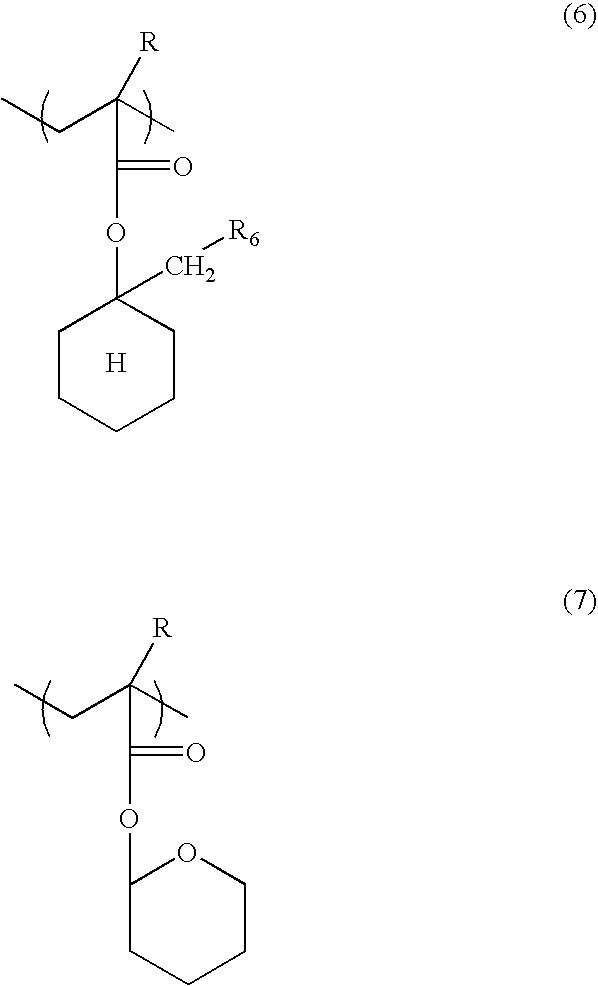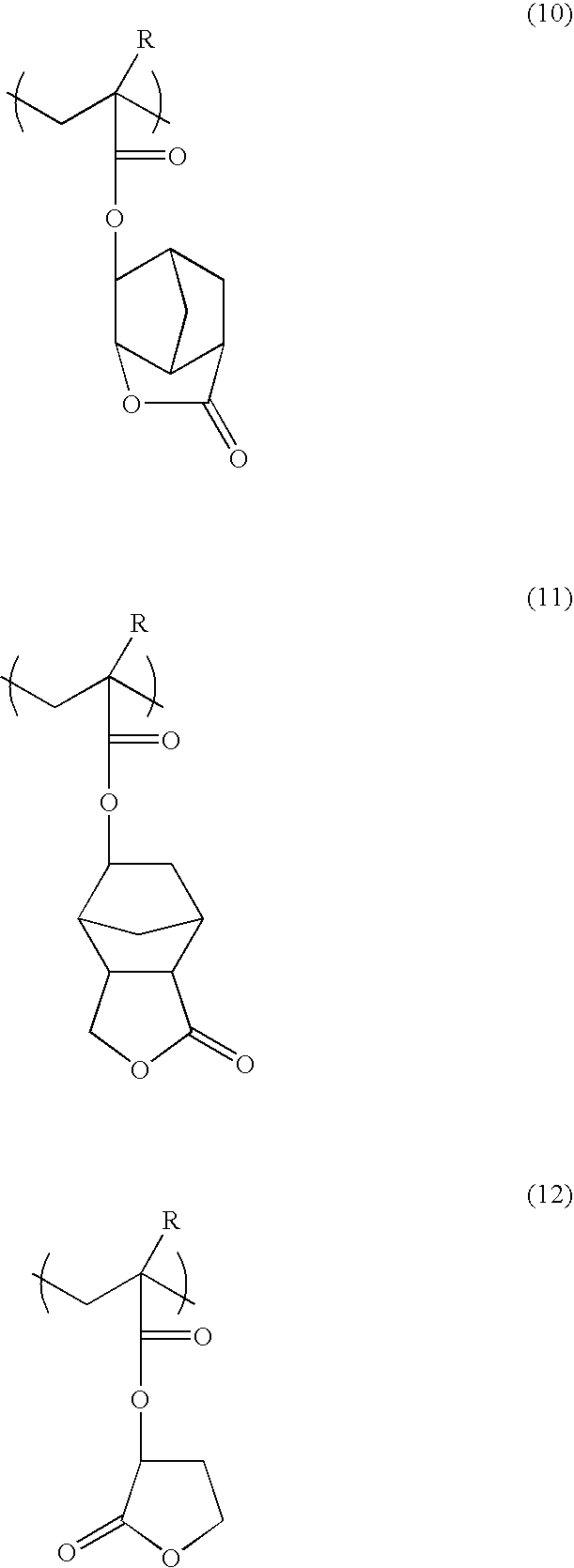Immersion exposure process-use resist protection film forming material, composite film, and resist pattern forming method
- Summary
- Abstract
- Description
- Claims
- Application Information
AI Technical Summary
Benefits of technology
Problems solved by technology
Method used
Image
Examples
example 1
[0151] The resin component, acid generator, and nitrogen-containing organic compound shown below were uniformly dissolved in an organic solvent to prepare positive resist composition 1.
[0152] As the resin component, 100 parts by mass of a methacrylate-acrylate copolymer comprising three types of constitutional units represented by the chemical formulae (39a), (39b), and (39c) below was used. In the constitutional units used in the preparation of the resin component, p, q, and r are as follows: p=50 mol %, q=30 mol %, and r=20 mol %. The resin component prepared had a mass average molecular weight of 10,000.
[0153] As the acid generator, 3.5 parts by mass of triphenylsulfonium nonafluorobutanesulfonate and 1.0 part by mass of (4-methylphenyl)diphenylsulfonium trifluoromethanesulfonate were used.
[0154] As the organic solvent, 1,900 parts by mass of a mixed solvent of propylene glycol monomethyl ether acetate and ethyl lactate (mass ratio: 6:4) was used.
[0155] Further, as the nitro...
example 2
[0162] An antireflection coating film, an ArF positive resist, and a protective film were formed on a substrate in accordance with the same procedure as that in Example 1.
[0163] Using laboratory equipment prepared by Nikon Corporation using a prism and a liquid and two-beam interferometry exposure at a wavelength of 193 nm, the substrate having the protective film formed thereon was subjected to immersion lithography (the bottom surface of the prism was in contact with the protective film through water).
[0164] The resultant substrate was subjected to PEB treatment in the same manner as that in Example 1, and the protective film was removed using perfluoro(2-butyltetrahydrofuran). Then, the resist film was developed under the same conditions as those used in Example 1.
[0165] The thus obtained resist pattern having a 65 nm line and space of 1:1 was examined under a scanning electron microscope (SEM). As a result, the pattern profile was found to be excellent such that no fluctuatio...
example 3
[0202] The resin component, acid generator, and nitrogen-containing organic compound shown below were uniformly dissolved in an organic solvent to prepare a positive resist.
[0203] As the resin component, 100 parts by mass of a polymer comprising constitutional units indicated by the above formula (40). The resin component prepared had a mass average molecular weight of 10,000.
[0204] As the acid generator, 3.5 parts by mass of triphenylsulfonium nonafluorobutanesulfonate and 1.0 part by mass of (4-methylphenyl)diphenylsulfonium trifluoromethanesulfonate were used.
[0205] As the organic solvent, 1,900 parts by mass of a mixed solvent of propylene glycol monomethyl ether acetate and ethyl lactate (mass ratio: 6:4) was used.
[0206] As the nitrogen-containing organic compound, 0.3 part by mass of triethanolamine was used.
[0207] An antireflection coating film, an ArF positive resist, and a protective film were formed on a substrate in accordance with substantially the same procedure as...
PUM
 Login to View More
Login to View More Abstract
Description
Claims
Application Information
 Login to View More
Login to View More - R&D
- Intellectual Property
- Life Sciences
- Materials
- Tech Scout
- Unparalleled Data Quality
- Higher Quality Content
- 60% Fewer Hallucinations
Browse by: Latest US Patents, China's latest patents, Technical Efficacy Thesaurus, Application Domain, Technology Topic, Popular Technical Reports.
© 2025 PatSnap. All rights reserved.Legal|Privacy policy|Modern Slavery Act Transparency Statement|Sitemap|About US| Contact US: help@patsnap.com



